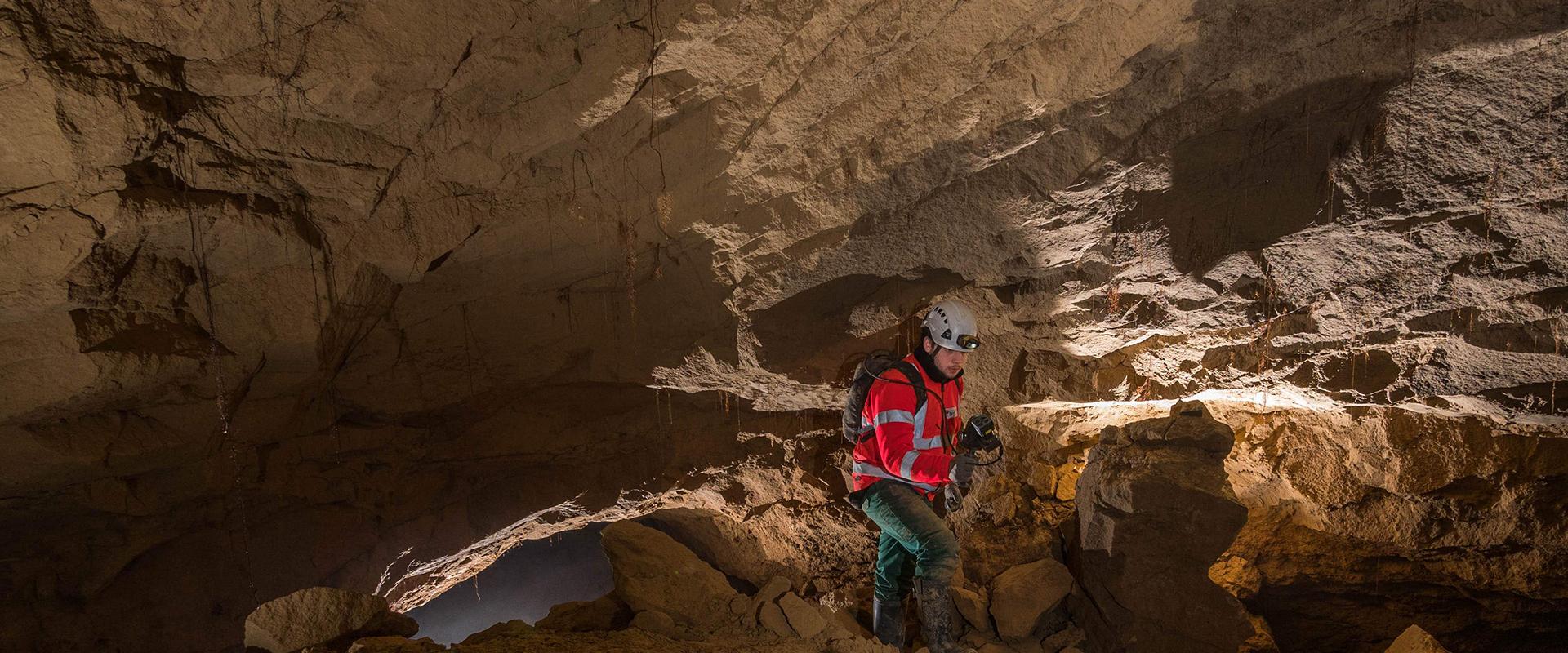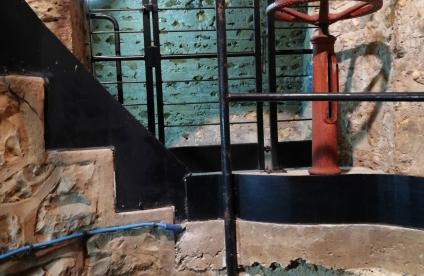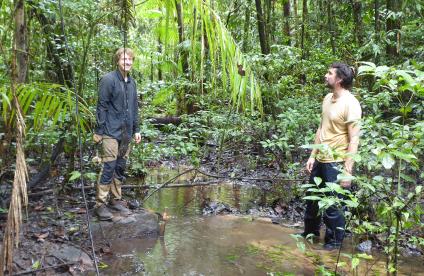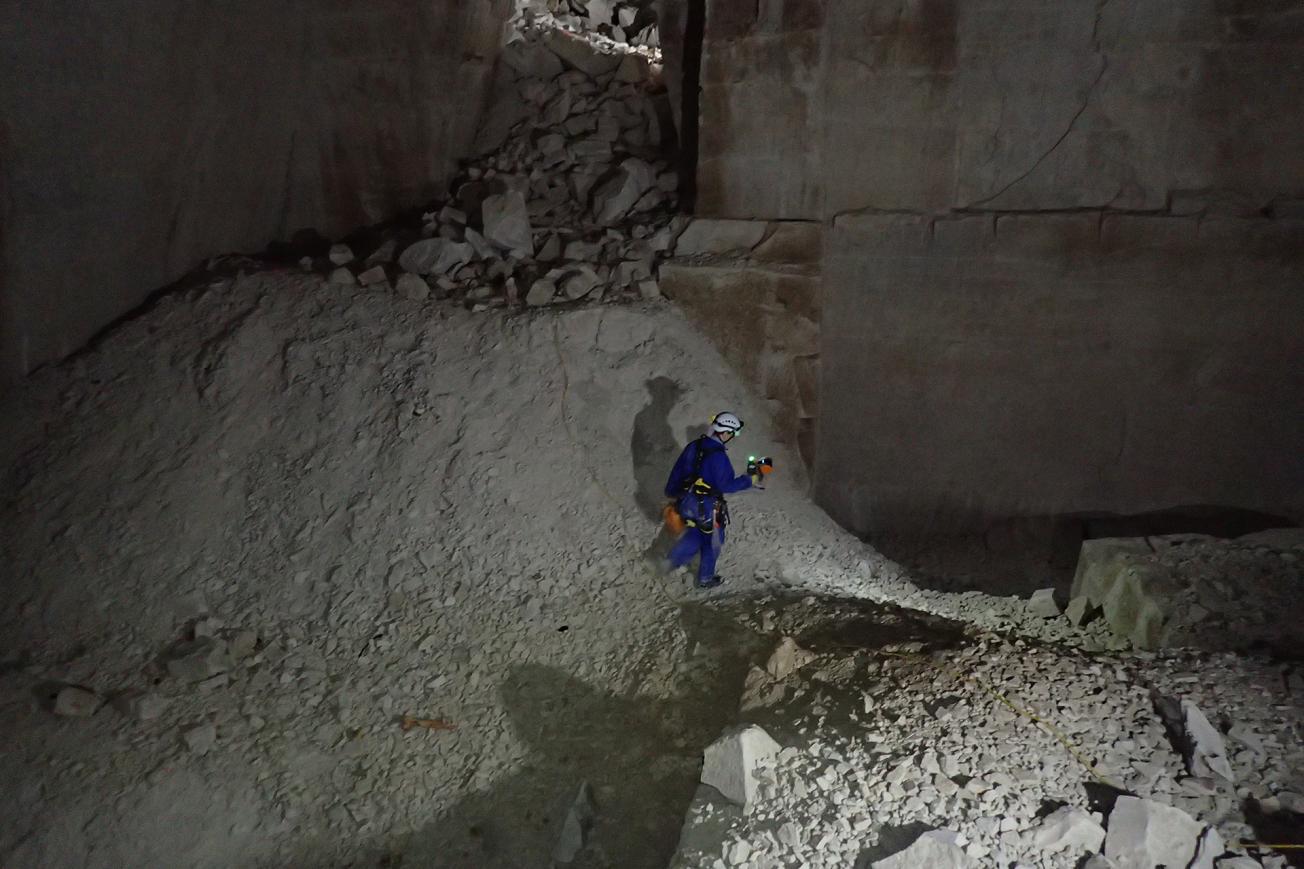
Visit to a former chalk quarry to carry out monitoring operations and a 3D scan, as part of the Châlons-en-Champagne Cavity Observatory programme (Marne, 2021)
© BRGM - S. Yart
The need
Due to its history, the city of Châlons-en-Champagne has many old underground cavities of various types and sizes (networks of galleries, numerous chalk quarries, sometimes deeper than 30m, champagne cellars, etc.), which were often exploited several centuries ago. As these cavities age, they can represent a potential danger to people and property above ground, notably in dense urban areas. BRGM therefore recommended implementing a 5-year action plan (2019-2023) to monitor all known cavities, while also aiming to improve knowledge about the subsurface in areas where the presence of cavities could represent a significant hazard.
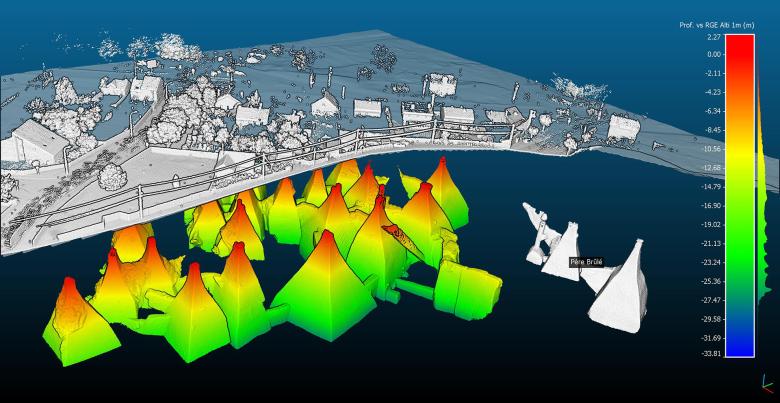
3D survey of the Télégraphe and Père Brulé chalk quarries (Châlons-en-Champagne, 2020)
© BRGM - S. Yart
The results
The action plan put in place comprises three modules:
- Regular monitoring of all known cavities: survey of cavities with a 3D laser scanner and stability assessments. These enable us to map and precisely locate the cavities (footprint, height of void, thickness of cover, etc.) in relation to surface installations, and to identify any instabilities (height of vaults, fracturing, water infiltration, etc.) observed below ground. Recommendations concerning the safety measures required are provided for each cavity visited;
- Initial assessments of non-monitored cavities;
- The search for cavities using microgravimetry in high-risk sectors. At the end of the investigations, specific recommendations are made (notably monitoring probes) in line with the anomalies observed, which may represent areas with cavities.
Using the results
The annual reports published by the Cavity Observatory are used as a decision-making tool by the local authority, in terms of integrating risk management in its planning policy.
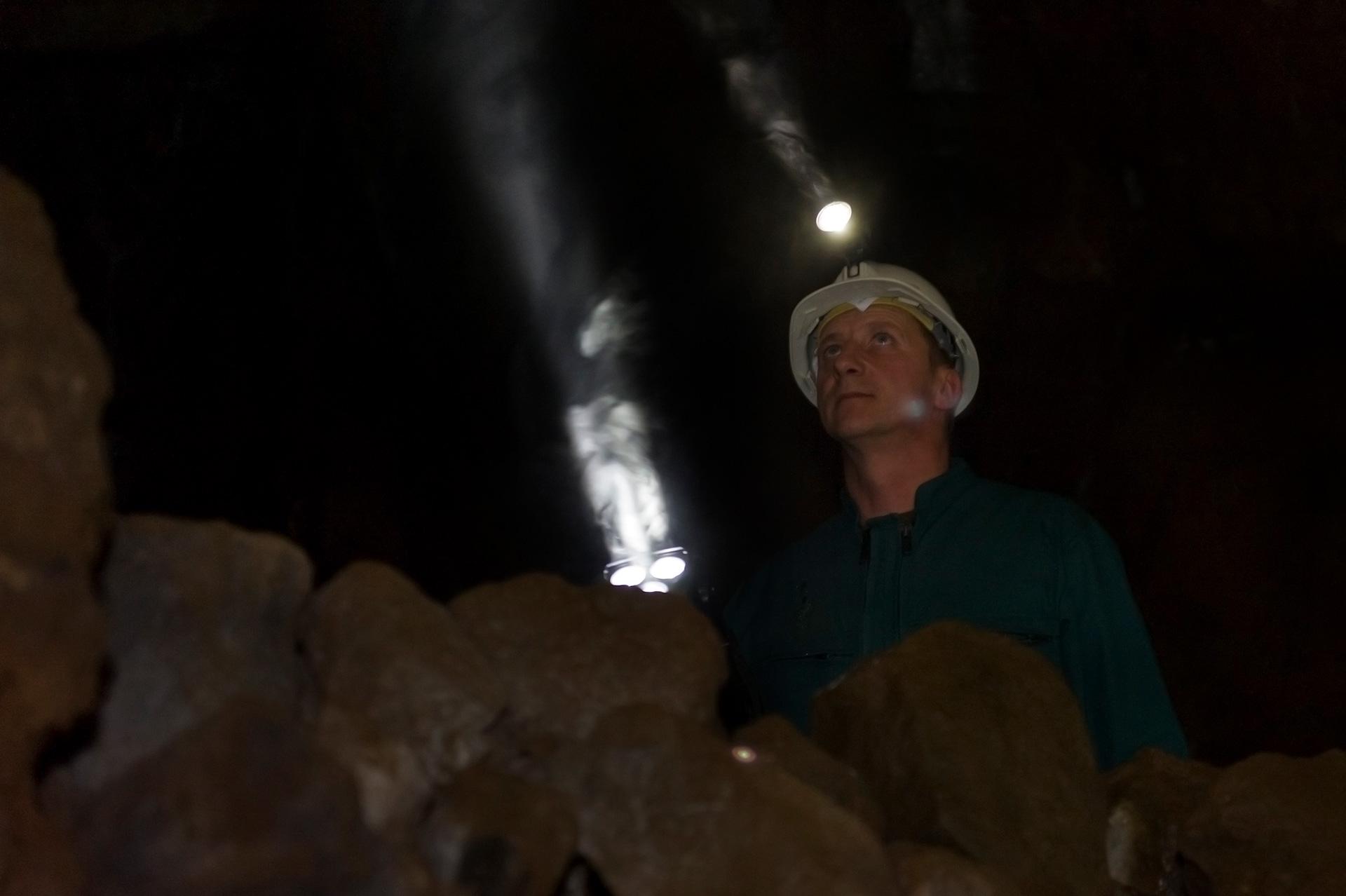
BRGM provides high-quality scientific analyses and explains its findings to elected officials and residents in its reports on cave visits. These summary reports help us learn about the area from a different angle, with 3D images of the subsurface. The observatory enables us to integrate BRGM's interventions into the operational phases of our planning projects, which saves time and improves safety.

